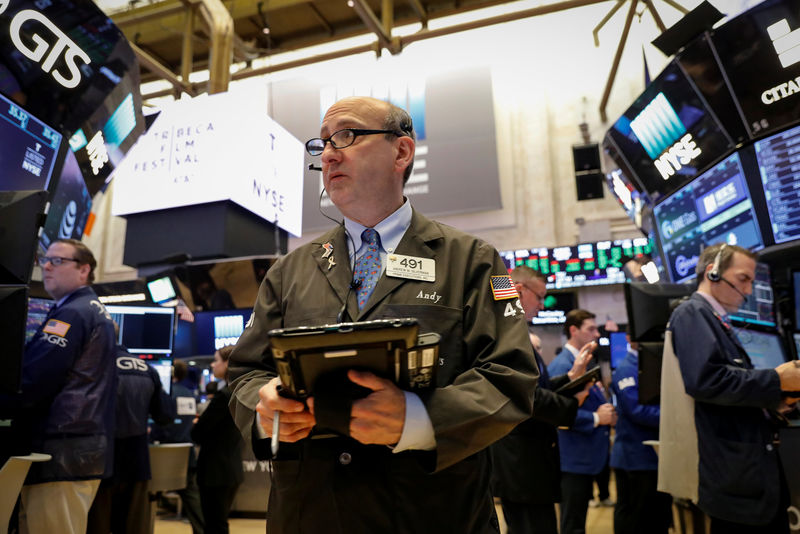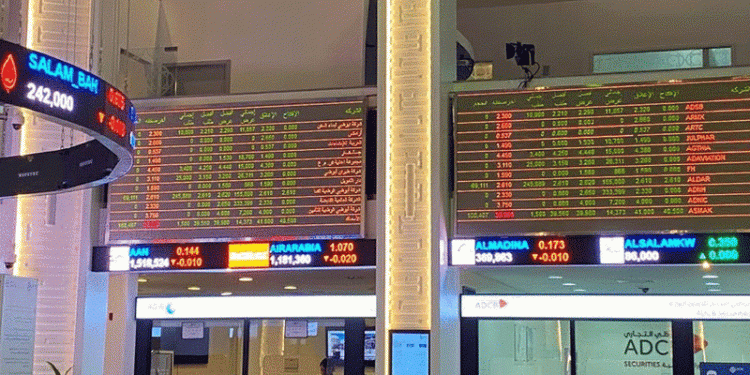 © Reuters. Traders work on the floor of the NYSE in New York
© Reuters. Traders work on the floor of the NYSE in New YorkBy Helen Reid
LONDON (Reuters) – Investors are still keen on risk assets despite bearish signals such as a flattening U.S. yield curve and a surprise move by China to cut bank reserve requirements, Bank of America Merrill Lynch (NYSE:) strategists said on Friday.
As a strong earnings season rekindled risk appetite, investors pushed money into U.S. and emerging market equities, while they pulled out of European and Japanese stocks, BAML strategists said, citing EPFR flows data.
Overall, a modest $2.8 billion flowed into bonds while equities drew small inflows of $3.3 billion.
High-yield bonds drew $2.3 billion inflows this week while $1.5 billion flowed into government bonds, in flows strategists said were starting to reflect more dovish central banks and investors’ expectation yields have peaked.
The bank’s “bull and bear” indicator of market sentiment was at 5.9, a neutral level, but strategists struck a pessimistic tone, focusing on the flattening U.S. yield curve and China’s surprise move to cut reserve requirement ratios.
The U.S. yield curve has hit its flattest since the global synchronized recovery, they said, despite record earnings, U.S. tax cuts, unemployment at record lows and surging commodity prices.
An inversion of the yield curve would be a bad omen, indicating a recession around the corner. By 1023 GMT the curve was at 48.32, up slightly from the previous session.
Strategists saw Chinese easing as another sign of a slowdown, saying the surprise move to cut reserve rates was triggered by a strong yuan and slowing export growth.
“As macro data reflect global slowdown and central banks blink … rotation to defensives to accelerate,” they said, adding they expect defensives to outperform cyclical assets.
Flows since the start of the year indicate risk aversion in bonds and risk appetite in equities, a pattern BAML’s strategists labeled “schizophrenic”.
TECH RETAINS CROWN
Government bonds have seen strong inflows while high yield bonds have been dropped, while in equities the most popular areas year-to-date are Japan, emerging markets, and financials. Utilities and telecoms stocks, seen as defensive, have seen sharp outflows.
Commodities were easily the best-performing asset class of the year so far, returning 23 percent, while the U.S. dollar nursed losses of 9 percent since January, in price action the bank said was typical of this late stage in the economy.
“Last time asset performance ranked this way was in 2007,” strategists noted, striking an ominous tone.
Investors reversed sharply out of Japanese equities this week, driving record $5 billion outflows from the region after 19 straight weeks of inflows.
European stocks also suffered outflows of $2 billion, taking year-to-date flows into negative territory – reflecting the region’s fall from grace this year as macroeconomic data shows signs the “Euroboom” is slowing.
U.S. equities saw $5.1 billion of inflows while emerging markets drew in $3.7 billion.
Tech remained the most popular sector, drawing in $0.6 billion, while healthcare, energy, materials and financials all saw outflows.
BAML’s fund manager survey this week showed investors have been cutting down on their tech exposure, considering the sector the “most crowded” trade for the third month running.
In commodities, precious metals, whose prices have soared as Russian sanctions sparked fears of a supply squeeze, drew in strong inflows of $0.8 billion.
Italian and Greek equities topped the chart of “overbought” areas of the stock market, indicating investors’ newfound appetite for European periphery markets.
Source: Investing.com


























